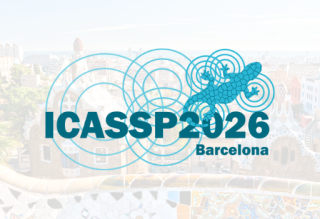Automation is Coming to Research
Top Reasons to Join SPS Today!
1. IEEE Signal Processing Magazine
2. Signal Processing Digital Library*
3. Inside Signal Processing Newsletter
4. SPS Resource Center
5. Career advancement & recognition
6. Discounts on conferences and publications
7. Professional networking
8. Communities for students, young professionals, and women
9. Volunteer opportunities
10. Coming soon! PDH/CEU credits
Click here to learn more.
Automation is Coming to Research
The rapid advancement and proliferation of information and communication technologies (ICT) in the past two decades significantly impacted how we do research. For instance, our research increasingly relies on growing computing power and storage capacity to gather and process the constant production of data - our observations of systems and phenomena we would like to understand, control, and improve. To turn these observations into useful knowledge, findings, discoveries, and better decisions, the data needs to be intelligently processed, and the results of such processing suitably visualized.
In research communities, the process of obtaining, processing and visualizing data to yield new insights is usually captured and shared in scientific papers. The papers often cite other papers in order to connect new findings with previous findings. This creates an intricate web of interlinked papers comprising most of our scientific knowledge. The web of papers is already very large and growing exponentially. It’s difficult to search and navigate - and easy to continually rediscovering things we already know.
A new, much more intelligent system for capturing and storing scientific knowledge is needed - and signal processing can help. Signal processing can devise special robots that can crawl the web of papers the same way Google robots map the Internet. The papers robots can tell us what is already known and in exactly what papers, so we can avoid rediscovering known things and wasting our previous research resources. The papers robots can automatically summarize selected papers, categorize and recommend them, generate a survey about a specific research topic, outline how the research ideas evolved over time, and identify emerging research trends. The papers robots may soon be even able to recommend solutions to the research problems considered.
Some types of papers robots already exist, although they are still not exploited widely in the research labs. The papers robots develop their knowledge extraction and information processing capabilities mainly due to their extensive use of natural language processing, text mining, deep learning and other advanced methods of machine learning and artificial intelligence. The machine learning of scientific papers is facilitated by a well-established structure of these papers. What I mean is that, syntactically, the papers consist of well-defined elements such as sections, section titles, paragraphs, sentences, keywords, figures, tables, references, and others. Semantically, the papers traditionally contain an introduction to the research problem, a survey of relevant literature, a description of research methods used, and a discussion of the results obtained.
Furthermore, the research methodologies used to produce scientific papers often mature over time - another feature the papers robots can exploit. The corresponding research patterns to be automatically discovered by the papers robots can be utilized to define research templates. The research templates are analogous to the document templates used, for example, in the text processing software that many people have installed on their personal computers. With the research templates, the research can be transformed into a problem of specifying the combinations of template inputs, including defining the possible solutions using the libraries of established research methods and results. Although the volume of the possible combinations can be enormous, the papers robot can suggest the most promising cases after exploring and learning from a huge number of the published scientific papers.
The papers robots will change how research is done today. They will automate many tedious research tasks, greatly enhancing our research productivity, but also fundamentally reshaping the research landscape. As is the case with automation in all other industrial sectors, we will see a shift in the demands for specific research skills. However, without any doubt, the demand for signal processing experts and skills will likely remain at the top.
ABOUT PAVEL LOSKOT
Dr. Loskot is currently a senior engineering lecturer at Swansea University in Wales, U.K. He has gained long-term work, educational and cultural experience from the Czech Republic, Finland, Canada, the UK and China, and has an extensive portfolio of academic and industrial collaborative projects with a diverse range of institutions. Connect with Dr. Loskot on LinkedIn or send him an email.
SPS Social Media
- IEEE SPS Facebook Page https://www.facebook.com/ieeeSPS
- IEEE SPS X Page https://x.com/IEEEsps
- IEEE SPS Instagram Page https://www.instagram.com/ieeesps/?hl=en
- IEEE SPS LinkedIn Page https://www.linkedin.com/company/ieeesps/
- IEEE SPS YouTube Channel https://www.youtube.com/ieeeSPS









